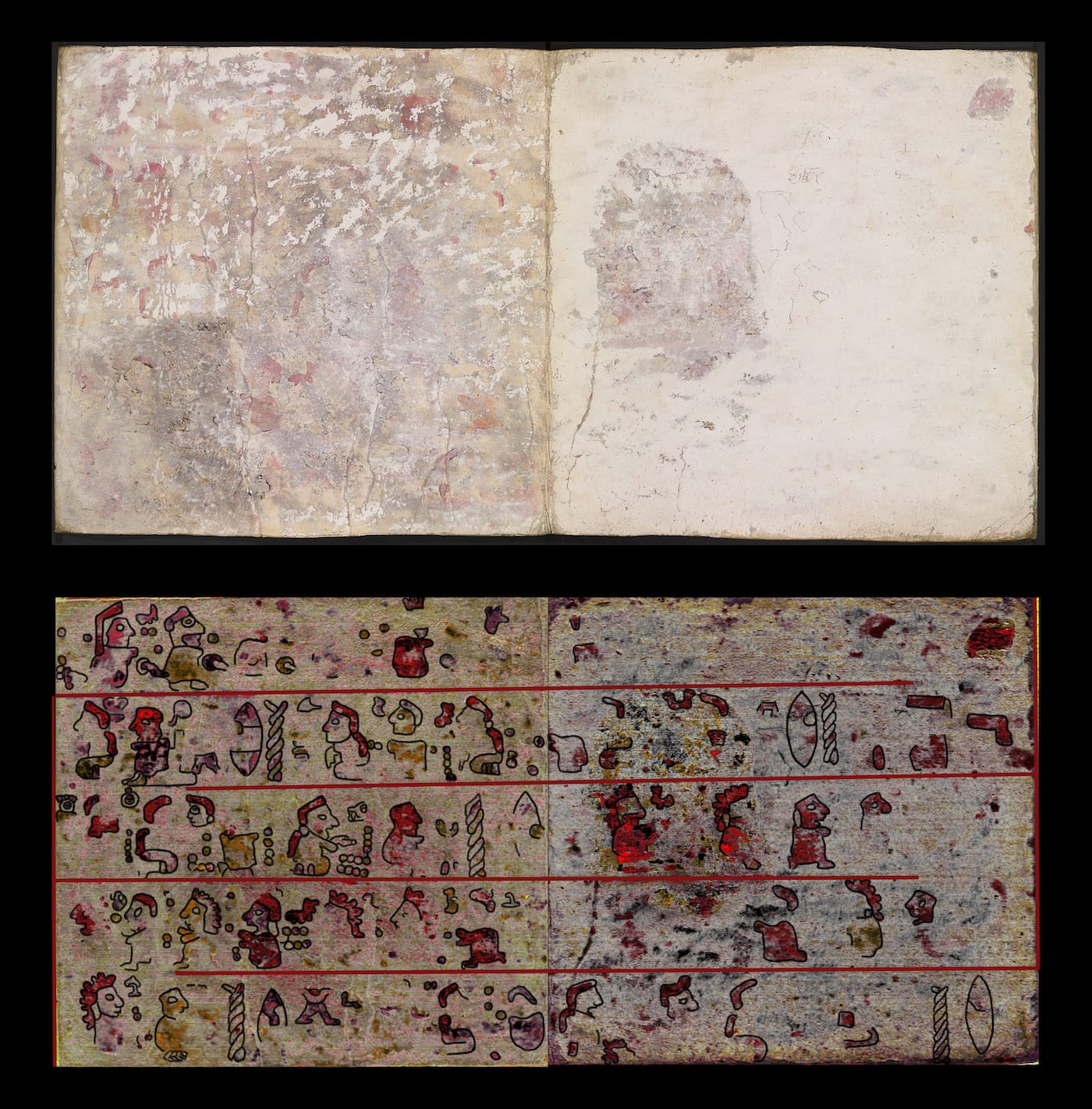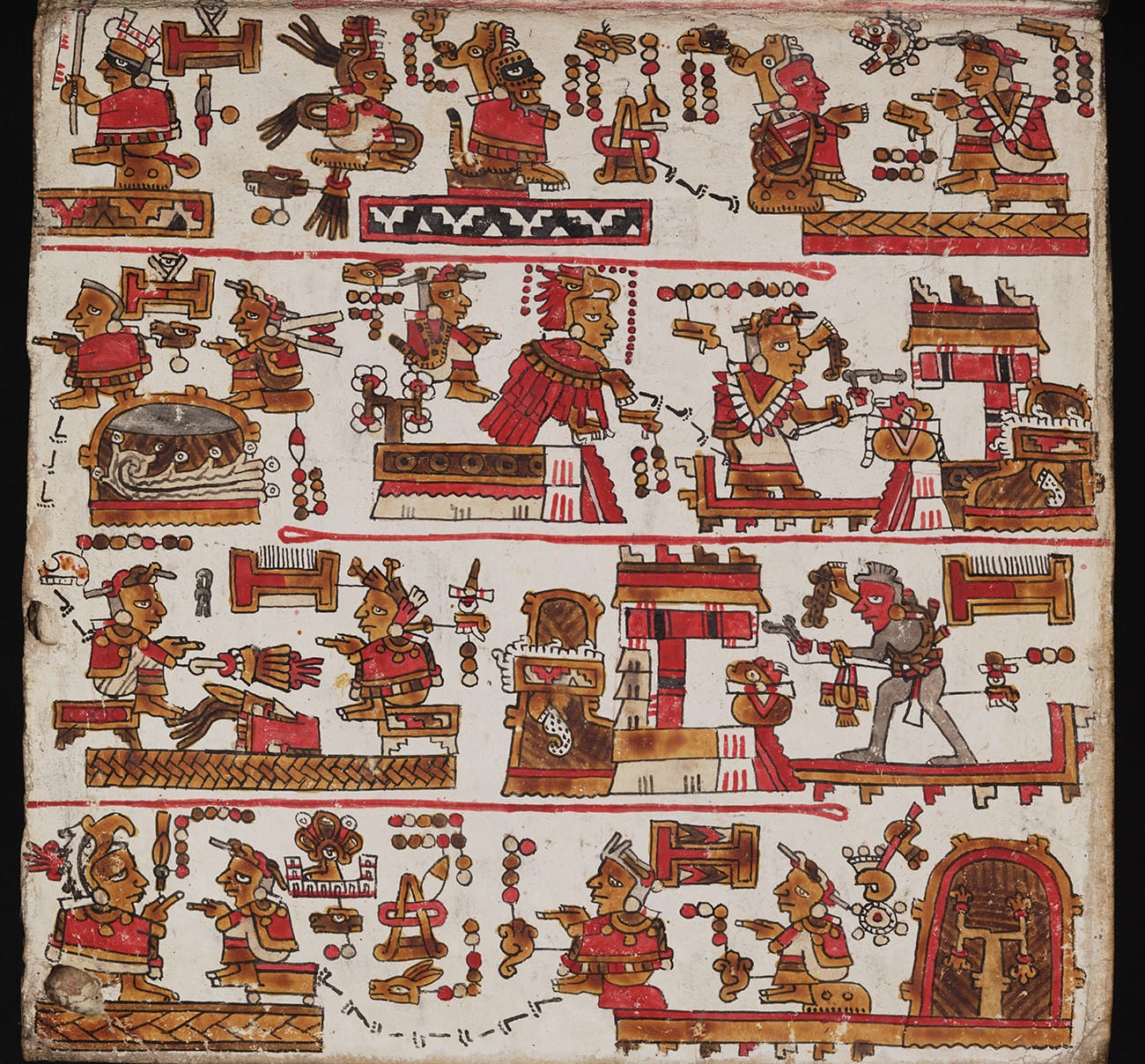Researchers Prove Rare Mixtec Codex Is a Palimpsest
Less than 20 known precolonial codices from the area of modern-day Mexico exist, and researchers have recently uncovered hidden imagery beneath the pages of one.

Less than 20 known precolonial codices from the area of modern-day Mexico exist, and researchers have recently uncovered hidden imagery beneath the pages of one. Dating to around 1560 and known as Codex Selden, or Codex Anute, the manuscript is also just one of five surviving ones from the Mixteca region in present-day Oaxaca. For 500 years, figures and symbols painted in red, yellow, orange, and black paint lay on its reverse side but hidden under a layer of gypsum and chalk gesso; they now come to light after a four year collaboration between researchers at the Universities of Leiden and Delft and University of Oxford’s Bodleian Library, who recently published their findings in the Journal of Archaeology: Reports.

At 20 pages long, Codex Selden is made of an over-16-foot-long strip of deer hide covered on both sides with gesso and folded like an accordion so both its front and back invite writing. Scholars have suspected for decades that it is a palimpsest, but the new report proves that the surviving registers of still-vivid scenes were illustrated on pages already filled with drawings. Investigations began in the 1950s under the leadership of Mexican archaeologist Alfonso Caso, who actually scraped away the white gesso of one page to uncover underlying images, but he halted investigations as he believed the palimpsest was no longer recoverable. Armed with advanced technology, the university researchers naturally had a less-invasive approach, using hyperspectral imaging to reveal the pictographs, which served as the common writing system of the Mixtec and other Mesoamerican communities.

As the researchers write in a release, “These codices use a complex system of pictures, symbols, and bright colors to narrate centuries of conquering dynasties and genealogies as well as wars and the history of ancient cities. In essence these codices provide the best insight into the history and culture of early Mexico.”
The team chose seven pages to study, from which emerged figures including women with red markings that may represent mantles and hair or headdresses; individuals holding walking sticks or spears that may portray a military expedition; and a long series of people facing the same direction, which is a rare scene in other known codices. Other sections reveal the glyphs for rivers. Overall, the researchers have found that the long-hidden sections of the codex differ both in style and content from Codex Selden. Additionally, while you would hold Codex Selden vertically to read the images from the bottom to the top, to decipher the hidden text on its reverse, you would hold the manuscript horizontally, with the images following a zigzag pattern.
Investigations of the codex’s pages are still ongoing, but the team believes that its pictures may lead to better understanding of archaeological remains from southern Mexico, as the places mentioned in other codices often correlate to actual archaeological sites. The researchers also expect to learn more about the people depicted, perhaps even managing to identify some of them.






